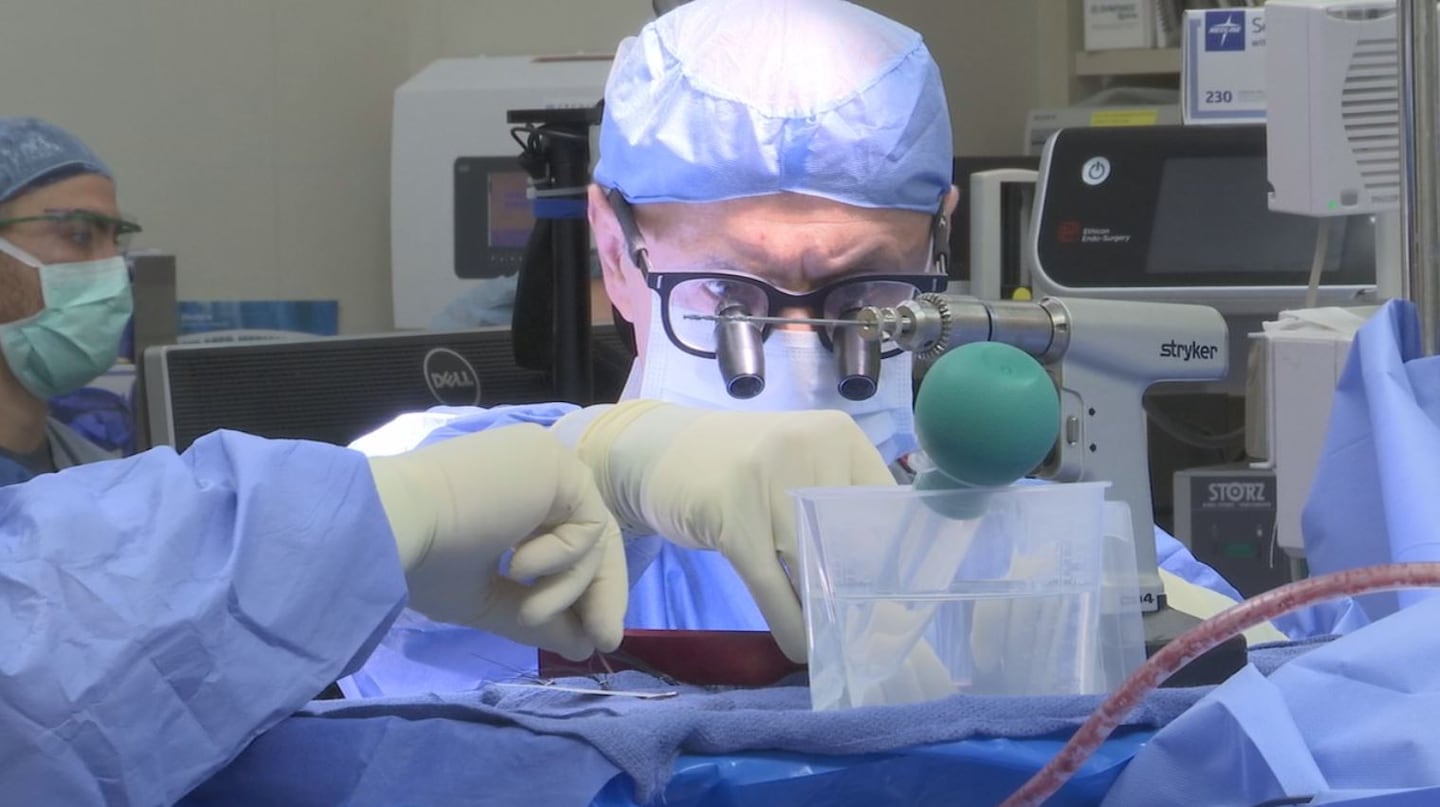BOSTON — The use of robotic assistance in the operating room has surged in recent years, according to a study published in the Journal of the American Medical Association.
So Massachusetts-based surgeons took Boston 25 News into their hospitals to heap praise on the technological advancements.
“In the mid-90s, people were using the Internet. Nobody saw what it would look like now,” said Dr. Joseph Kavolus, an orthopedic surgeon who has embraced robotic assistance at Tufts Medical Center in Boston. “I think we’re in the mid-90s for robotic utilization for orthopedic surgery. I think the advances are going to be huge and we’re just scratching the surface.”
The study published in JAMA showed about 1.8 percent of general procedures in its focus area involved the use of robotic assistance in 2012, while that number rose to more than 15 percent in 2018.
Kavolus told Boston 25 News that he uses robotic assistance in roughly half of his surgeries. The surgeon performs all the soft-tissue cuts by hand and then utilizes the robotic arm to make bone cuts during knee and hip replacements, which he said allows for greater precision and less damage to the surrounding tissue.
“As we refine the technology, as we become better at utilizing it, those are things that patients will see down the line,” Kavolus said about long-term improvements in pain management, recovery time and implant longevity in patients. “Anecdotally, I think that has been the case for my patients, but the literature has yet to bear that out.”
At UMass Memorial in Worcester, neurosurgeon Dr. Oguz Cataltepe employs a different company’s robotic assistant to perform brain surgery.
Dr. Cataltepe took Boston 25 News into the operating room as he teamed with the robot to place 11 electrodes on the brain of a patient with severe epilepsy.
In the past, without the robot, Cataltepe said his surgical team might have placed fewer electrodes in a more invasive procedure that would have taken a much longer time, making it less likely he could successfully map out the source of the patient’s seizures.
“If you go back 20 years ago, or even 10 years, many of these patients were accepted as not surgical candidates. ‘There’s nothing we can do about your seizures.’ That was the answer for these patients.” Cataltepe said. “Now, we can tell them there are these options.”
Still, the study published in JAMA in January questioned whether robotic assistance is needed as often as it’s used. Cost has also been raised as a concern, given the expensive nature of the machinery and certain one-time-use parts.
Kavolus, however, said that Medicare and insurance companies usually cover the procedures at a similar cost to the patient as a conventional surgery. If it didn’t cost less to the insurers in the long run, Kavolus contends they typically would not cover the up-front expense.
RELATED: 6-year-old fighting cancer attends class with robot’s help
© 2020 Cox Media Group








